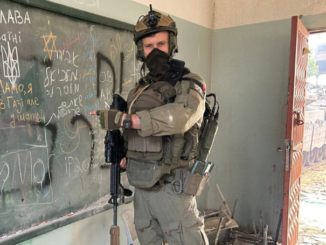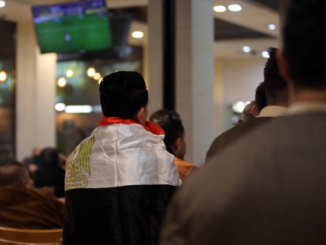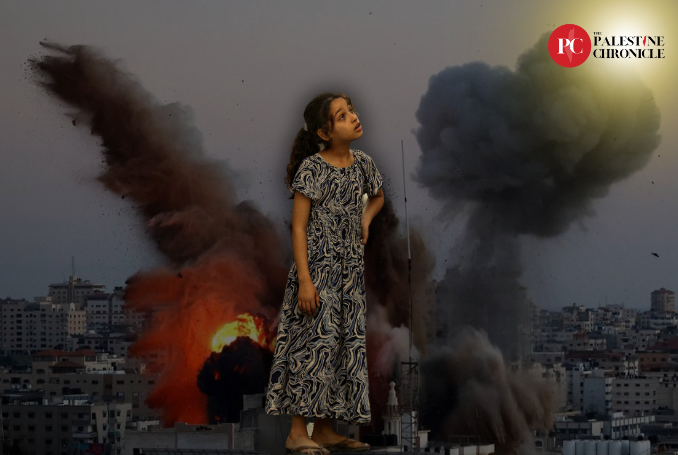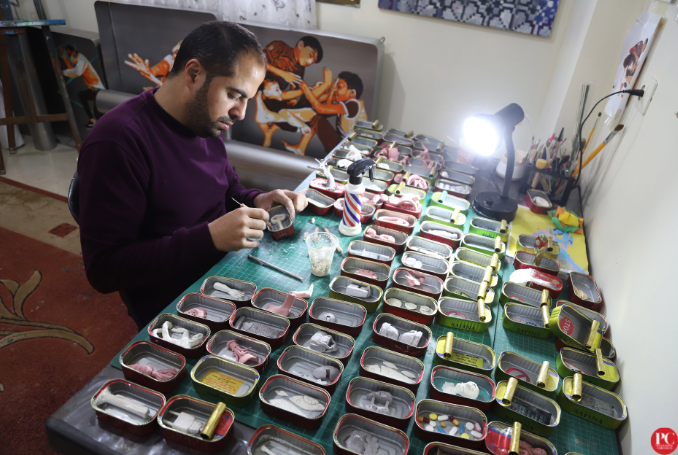
From inside a very small studio, in the Saftawi area in northern Gaza City, Palestinian refugee Mohammed Jahlash is soaring with his art to new heights. He turns discarded sardine cans into portraits telling the stories of Palestinian refugees in the Gaza Strip, and everywhere else in the world.
His tools are simple, a few brushes, paint, and, of course, sardine cans.
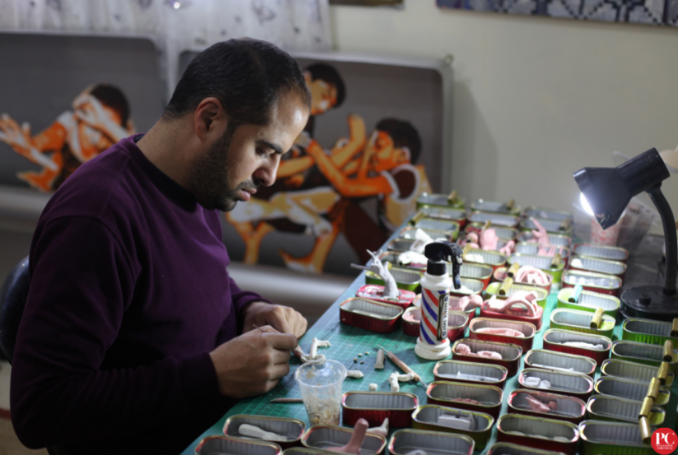
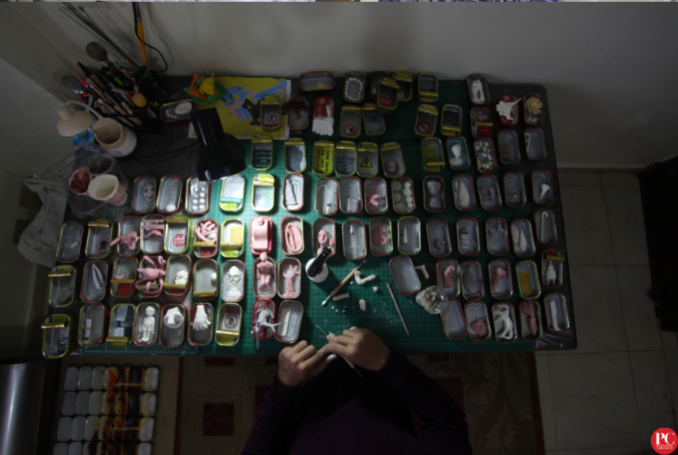
Jahlash, 40, a descendant from Palestinian refugees who were ethnically cleansed from the town of Isdud in southern Palestine in 1948, is unique among Gaza’s thriving art community. The sardine cans, which represent the canvases in Jahlash’s work, are themselves symbolic, as they are part of monthly food rations received by Palestinian refugees from the United Nations Relief and Works Agency for Palestine Refugees (UNRWA).
“I chose the sardine cans because it’s the term we use for refugee camps in Gaza, because they are blocked from all directions, crowded and narrow,” Jahlash told the Palestine Chronicle.
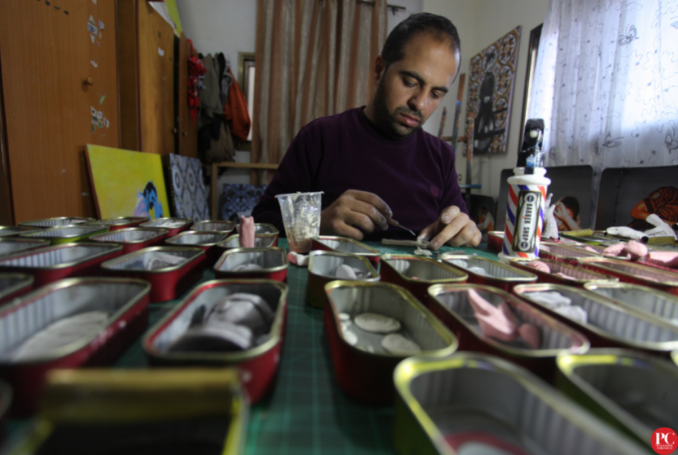
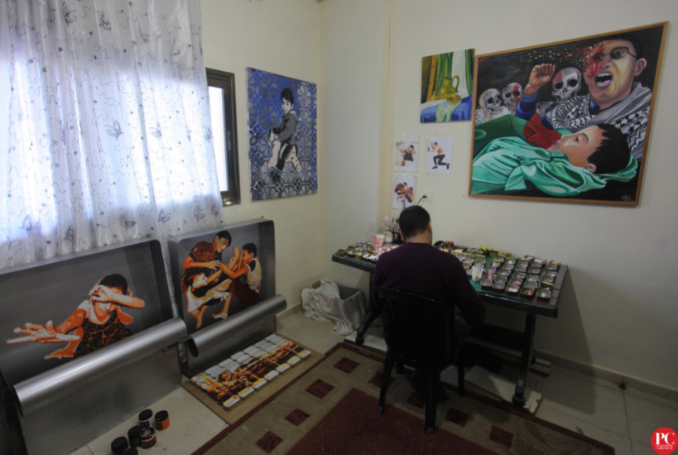
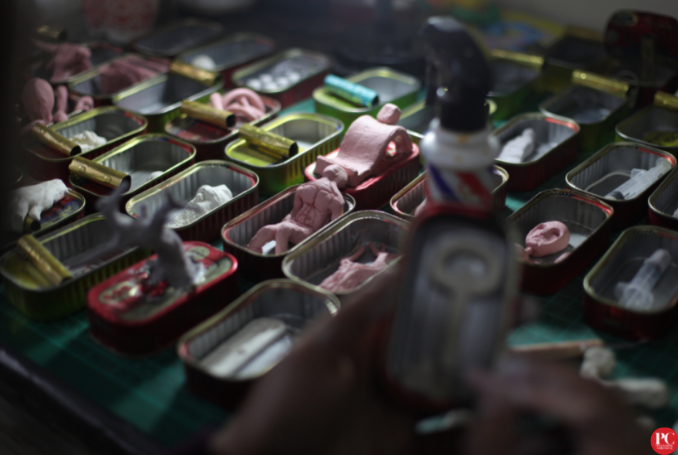
“Sardine cans are also a representation of the poverty we experience in these camps. It is one of the basic food of the poor,” the Gaza artist added.
Each sardine can is turned by Jahlash into a story, one tells the story of illness, another of education, a third of the hardship experienced by Palestinian fishermen, of the siege, the suffering of children, the extreme poverty and so on.
Jahlash’s passion for art began at a very young age. Since he was a child, he used art as a way to express his feelings and the pain he experienced all around him. As he grew older, he harnessed his hobby, turning his passion into a daily commitment.
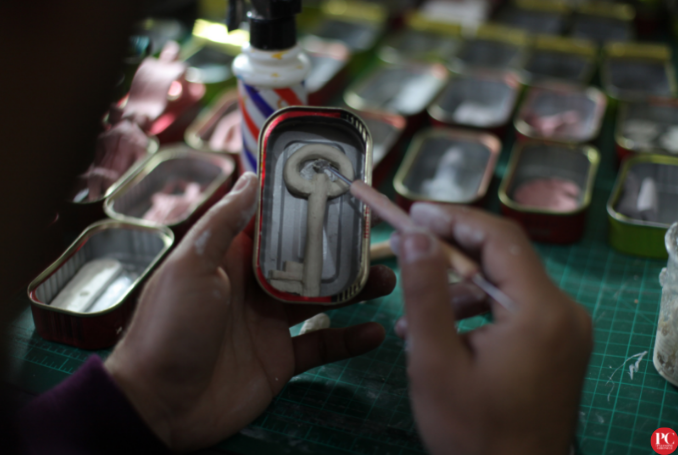
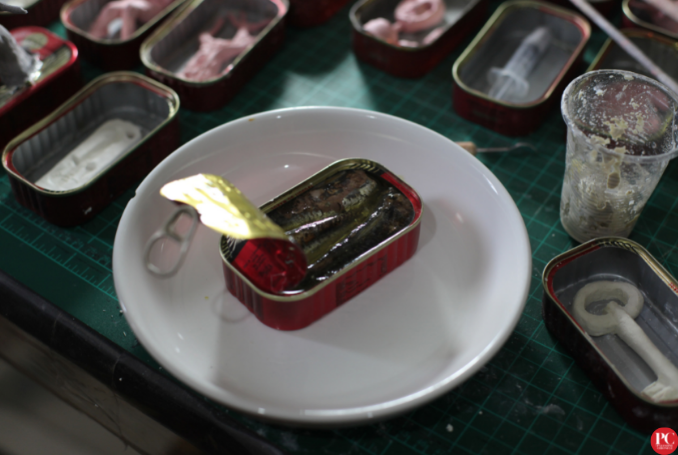
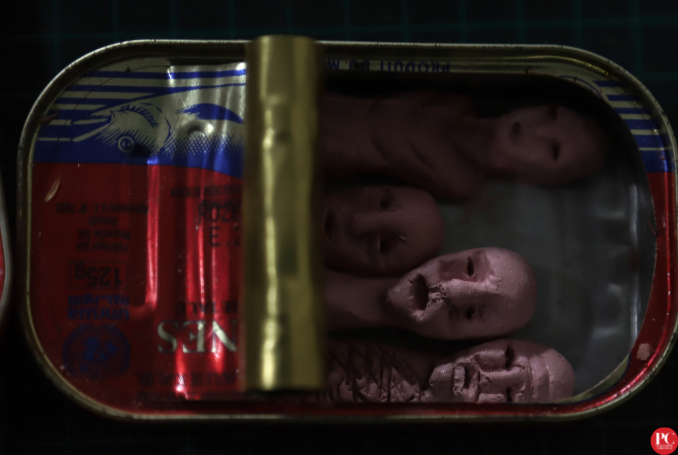
“Palestinians in Gaza love art, but they cannot afford to buy it because of the economic hardships that we all experience,” Jahlash said.
“This makes life much more difficult for us as artists. It is discouraging and, at times, depressing. While on the one hand we insist on using art as a form of expression, it is financially unrewarding. We can only hope that the situation will improve where we can all live a life of dignity and freedom.”
(The Palestine Chronicle)

– Mahmoud Ajjour is a Gaza-based photojournalist. He is the Palestine Chronicle’s correspondent in the Gaza Strip.



